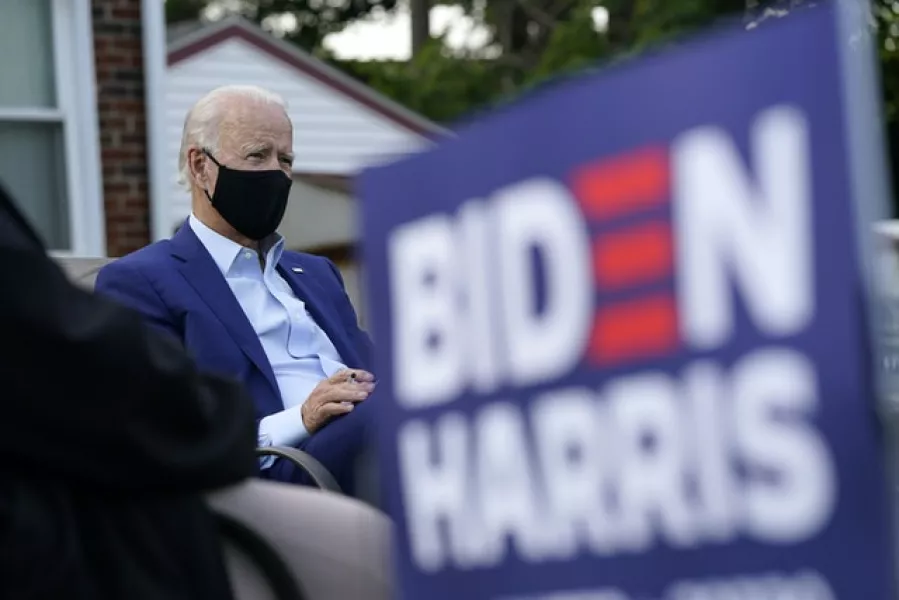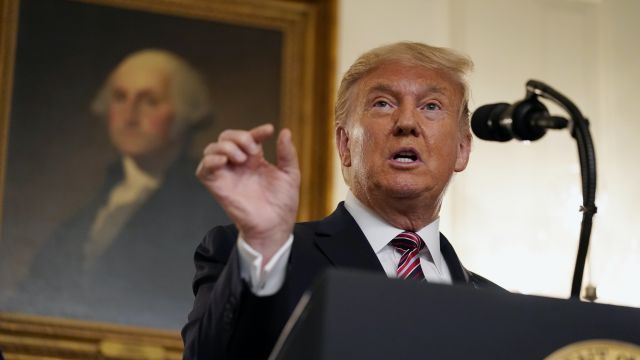Among the list were a trio of Republican senators – Ted Cruz, Tom Cotton and Josh Hawley – who Mr Trump said he would choose from were there vacancies to fill.
The release, less than two months before the election, is aimed at repeating the strategy Mr Trump employed during his 2016 campaign, when he released a similar list of could-be judges in a bid to win over conservative and evangelical voters who had doubts about his conservative credentials.
The Supreme Court could use some more justices who understand the difference between applying the law and making the law, which the Court does when it invents a right to an abortion, infringes on religious freedom, and erodes the Second Amendment.
— Tom Cotton (@SenTomCotton) September 9, 2020
Mr Trump said: “Every one of these individuals will ensure equal justice, equal treatment and equal rights for citizens of every race, colour, religion and creed.”
He tried to cast the list in contrast with judges who could be nominated if his Democratic rival, Joe Biden, wins in November, warning Mr Biden would select “radical justices” who would “fundamentally transform America without a single vote of Congress”.
Mr Biden has not outlined his list of potential picks and the Senate must confirm any nominee.
The nomination of a Supreme Court Justice is among the most important decisions a President must make.
Today, President @realDonaldTrump released a new list of potential nominees. pic.twitter.com/Y2UQ0QFZbU— The White House 45 Archived (@WhiteHouse45) September 9, 2020
In response to the White House announcement, Mr Cotton tweeted that he was “honoured” Mr Trump had asked him to consider the role and “will always heed the call of service to our nation”.
“It’s time for Roe v. Wade to go,” he added, referring to the court’s landmark 1973 abortion rights decision.
The court is currently divided 5-4 between conservatives and liberal, and while there is no current vacancy on the court, Ruth Bader Ginsburg, 87, has been undergoing cancer treatment, and three others members of the court are in their 70s and 80s.
Any vacancy in the highest court would give November’s winner – be it Mr Trump or Mr Biden – the ability to shape its future for decades to come.

Mr Trump has stressed that power on the campaign trail, claiming the person who wins could have “anywhere from two to four, to maybe even five” Supreme Court justices to pick, though that would require an extraordinary level of turnover.
Mr Biden has said he is working on a list of potential nominees, but the campaign has given no indication that it will release names before the election.
Democrats believe doing so would unnecessarily distract from Mr Biden’s focus on Mr Trump’s handling of the pandemic and the economy, while also giving the president and his allies fresh targets to attack.

Mr Trump, however, insisted that presidential candidates “owe the American people” a list of people they would consider because, aside from “matters of war and peace, the nomination of a Supreme Court justice is the most important decision an American president can make”.
Any list may be meaningless, however, as either man’s ability to add to the court depends on having a majority in the Senate, which confirms nominees.
Republicans currently hold 53 seats in the chamber to Democrats’ 45, with two independents who side with the Democrats, but Democrats could reclaim the majority this November.







